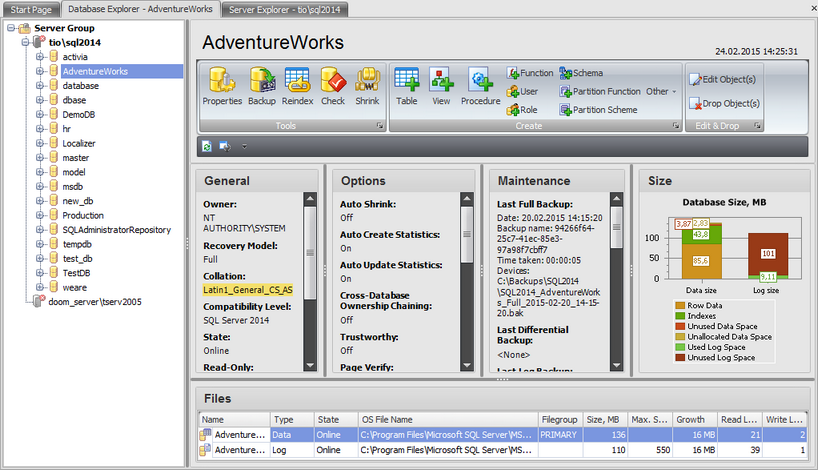Online Documentation for SQL Administrator for SQL Server
Database Objects Management
SQL Administrator provides powerful tools to manage database objects.
To obtain detailed information concerning SQL Server database and objects, refer to the official Microsoft® SQL Server™ documentation.
Note: Before working with database and objects in SQL Administrator you should register a server in the Database Explorer and connect to it.

After you have connected to the server in the Database Explorer the list of databases expands.
When you select the database in the Database Explorer its information is presented on the work area.
Using the buttons on the ribbon you can:
- open the Database Editor
- perform main database maintenance operations
- manage database objects (create, edit and drop)
On the work area of the database section the following database information can be found:
General
In this section you can view general information about the database: Owner, Recovery Model, Collation, Compatibility Level, State, Read-only, User Access, Guest Account, Creation Date.
Options
In this section some of the database options and their values are listed.
Maintenance
Here you can find information about database maintenance operations. For database backups (full, differential, transaction log) the following information is presented:
- Date
- Backup name
- Time taken
- Devices
Also this section displays the date of the last successful check and most fragmented indexes that should be rebuilt or reorganized.
Size
Here the diagram of the space usage by database files is presented. You can see how much space is occupied by Row Data and Indexes; Unallocated and Unused Data Space; Used and Unused Log Space.
Files
This grid displays the list of database files. Using the context menu you can create a new file, edit or drop the existing file and print the list of files.
To view the list of database objects double-click it in the tree and then select the necessary object group.



































































